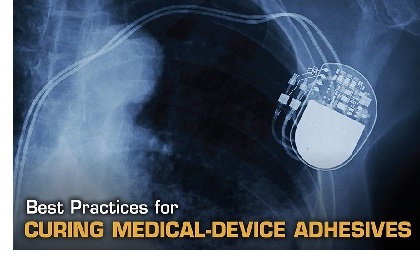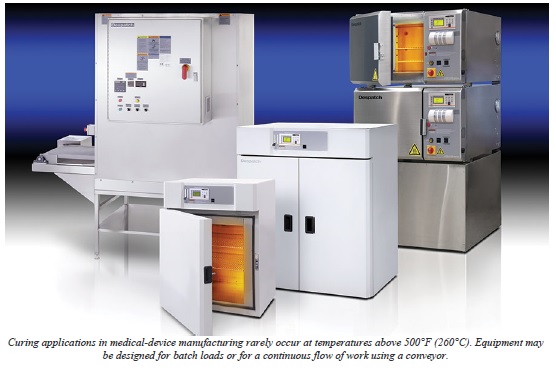|
Despatch Industries - Best Practices for Curing Medical-Device Adhesives
Rolf Kragseth, ITW EAE, Despatch Industries
While the parts seemed to bond well initially, accelerated age testing revealed that in many trials, bonding strength diminished over time — as had appearance and other measures of quality. The testing result indicated that ultra-precise temperature control was necessary to ensure proper finished goods. Outside of that precise process control window, quality was diminished. Lesson learned: Temperature matters.
How the curing process can strengthen or degrade a resulting bond is the focus of this article. The tradeoffs inherent with different types of adhesives and their curing methods will be discussed in an effort to establish curing best practices. In addition, the article will demonstrate that while irradiation curing is convenient, fast and allows for a simplified workflow, it often requires a post-curing thermal step. Moreover, irradiation sometimes has negative effects on the part.
Curing Alters and Strengthens Adhesive Bonds
Adhesives used in assembling medical devices must hold reliably under many difficult stresses and strains. These adhesives must perform flawlessly inside a most inhospitable environment: the human body. Curing is the process that helps ensure adhesives remain stable.
What is a Medical-Grade Adhesive? The term “adhesive” refers to the largest, most general category of binding chemicals. Adhesives generally include epoxy, acrylics, polyurethane, silicone and cyanoacrylates.
While the term “medical-grade adhesive” is not strictly defined or regulated by the Food and Drug Administration (FDA), it is generally thought of as health-compatible.[1] Producing medical-grade adhesives may include these processes:
Manufacture in a controlled environment such as a cleanroom.
Use of bio-compatible and potentially hypoallergenic materials to help minimize adverse effects upon skin contact. Materials may have been tested and cleared for potential toxicity or irritation responses.[2]
Use of equipment validated for medical-grade uses.
To continue reading this article, please
click here.
|




